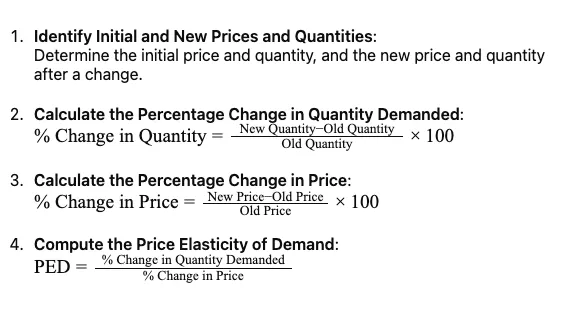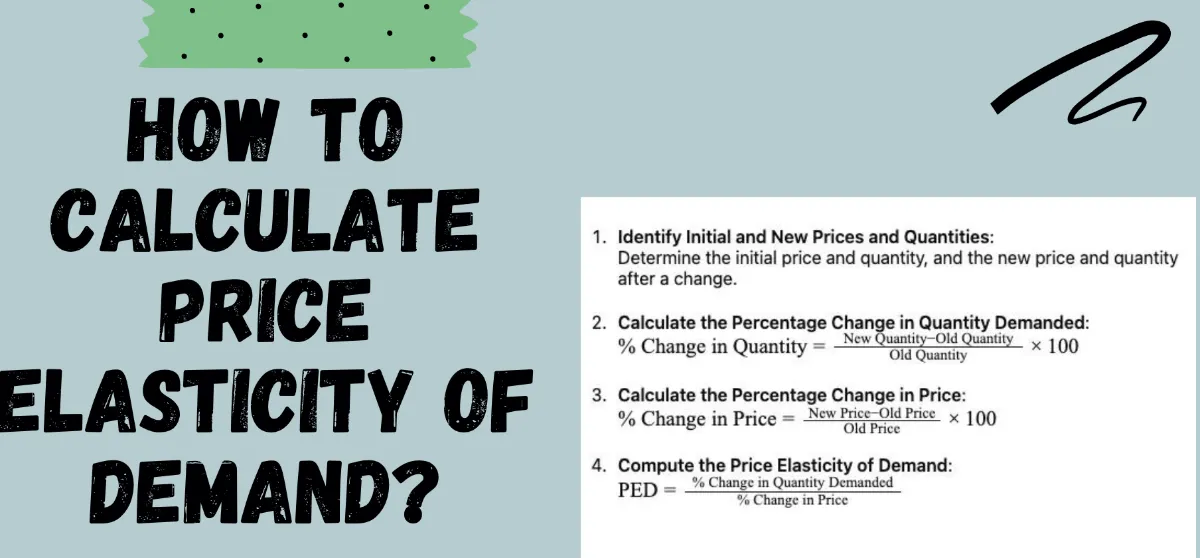What is Price Elasticity of Demand?
Price Elasticity of Demand (PED) measures the responsiveness of the quantity demanded of a product to changes in its price. In other words, PED quantifies how much the demand for a good or service changes when its price increases or decreases. This concept is crucial for businesses and economists to understand consumer behaviour and to make informed pricing decisions.
Table of Contents
How to calculate price elasticity of demand?
In order to understand how changes in price affect the demand quantity of a product calculating the Price Elasticity of Demand(PED) is very important. Price Elasticity of Demand will aid businesses and policymakers to make informed decisions about pricing, marketing and production. In this section we will see on how calculate price elasticity of demand.
The formula for Price Elasticity of Demand is:
Price elasticity of demand = % change in Q.D. / % change in Price
Or more formally:
PED=ΔQ/Q/ΔP/P
Where:
- Δ𝑄 = Change in Quantity Demanded
- 𝑄 = Initial Quantity Demanded
- Δ𝑃 = Change in Price
- 𝑃 = Initial Price
Lets see the steps involved on calculating PED.

Interpretation of Price Elasticity Demand
- PED > 1: Demand is elastic. Consumers are sensitive to price changes when there is Quantity demanded changes higher than the price change
- PED < 1: Demand is inelastic. Consumers are insensitive to price changes when Quantity demanded changes lower than the price change.
- PED = 1: Demand is unitary elastic. It occurs when Quantity demanded changes exactly as the price changes.
- PED = 0: Demand is perfectly inelastic. It occurs when Quantity demanded does not change with price.
- PED = ∞: Demand is perfectly elastic. A tiny change in price results in an infinite change in quantity demanded.
Also View: Meaning of Primary Demand And Secondary Demand
Examples on How to calculate Price Elasticity of Demand?
Example 1: Elastic Demand
Suppose a Momo shop sells 1,00 plates of Momo at $50 each. The shop has lower the price to $40, and the quantity demanded increases to 1,20 plates.
- Initial Price (P): $50
- New Price (ΔP): $40
- Initial Quantity (Q): 1,00 Plates
- New Quantity (ΔQ): 1,20 Plates
Percentage change in Quantity demand
% Change in Quantity = 120−100/100 X100 = 20%
Percentage change in Price
% Change in Price = 40−50/50×100=−20%
Now,
Price Elasticity Demand =20%/−20% = −1
Therefore, PED is -1 which is unitary elastic. It occurs when Quantity demanded changes exactly as the price changes.
Example 2: Inelastic Demand
Lets Suppose a new Momo shop which is recently opened sells 1,00 plates of Momo at $50 each. The greedy shopper has increase the price to $60 per plate, and the quantity demanded decreases to 80 plates.
- Initial Price (P): $50
- New Price (ΔP): $65
- Initial Quantity (Q): 1,00 Plates
- New Quantity (ΔQ): 80 Plates

Percentage change in Quantity demand
% Change in Quantity = 80−100/100 X100 = -20%
Percentage change in Price
% Change in Price = 65−50/50×100=30%
Now,
Price Elasticity Demand =−20%/30%=−0.67
Here the Demand is inelastic since it is less than 1. Consumers are insensitive to price changes when Quantity demanded changes lower than the price change.

